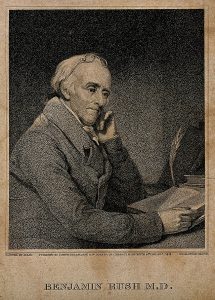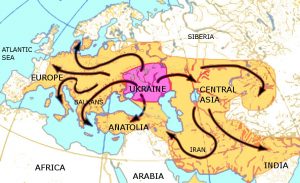Running outside, chasing your friends, playing with Legos–these are things you might remember doing as a young child. However, from the late 1700s to the mid-1800s in Britain, being paid meager wages and working for as much as sixteen-hour days with dangerous mining equipment was the norm for many young, British children. During the Industrial Revolution this was an ugly reality. Many working-class families found it necessary to have their children work alongside them in the mines. Because of their size and cooperation, and because it was easier to pay them less, these children were paid about five times less than men for the same number of hours worked, which for these young miners could be up to fourteen-hour days.1

Before the Mines and Collieries Act of 1842, children as young as four were allowed to work in the mines.2 Just imagine such young children running around a dark coal mine–it simply does not sound safe at all. These children were hired to be able to get into those hard to reach places that fully grown adults were unable to get into. During the Industrial Revolution, coal was a major source of energy, and was extremely important because it burned hotter than wood charcoal. The primary use of coal was used as a source of energy, and used to power the steam engines of factories, where many other children also worked. Because of its high demand and necessity, it helped increase jobs for the working people. Because of these factories, major industrial cities such as Birmingham, Manchester, and Liverpool, grew at a fast pace from small villages into large cities.3

In British coal mines, children typically had one of three jobs. Trappers, typically the youngest, would open and close the wooden doors–also called trap doors–to allow fresh air to flow through the mine. These trappers would sit in darkness for almost twelve hours at a time. It may seem a simple task, but if one of these little ones fell asleep, the job could become very dangerous. Other jobs were the tasks of hurrier and thruster. These jobs were usually given to older children and women. These workers had to pull and push tubs that were full of coal along the roadways, all the way to the pit bottom. The hurriers would be harnessed to the tub, and the thrusters would then help hurriers by pushing these tubs of coal. The thruster would have to push tubs of coal weighing over 600 kilograms from behind with their hands and the tops of their heads. The thrusters, mainly older girls, had to carry these baskets of dug coal, which were much too heavy for them. Because of their heavy weight, it would then cause their young, growing bodies to develop with deformities. The last typical job was the getter. This one was typically assigned to the oldest and strongest, usually grown men or strong, older teens. This job required them to work at the coal face, cutting the coal from the seam with a pickaxe. This was typically the only job where they would use a candle or safety lamp for light, as cutting the coal required it.4 Although the work at the coal mine may not seem very difficult, it was very dangerous. In one unnamed coal mine, 58 of the total 349 deaths in one year involved children thirteen years or younger.5

Those who worked in coal mines–whether below or above ground–were exposed to life-threatening working conditions that could ultimately be detrimental to their health. Children, mainly boys as young as eight, worked as breakers. Here, the coal was crushed, washed, and sorted according to size. The coal would come down a chute and along a moving belt. These breaker boys would work in what was called the picking room. Here, they would work hunched over for ten hours a day, six days a week, sorting the rock and slate from the coal with their bare hands. If their attention even drifted for a second, they could lose a finger in the machinery.6 The work also resulted in their exposure to a large amount of dust. In some cases, the dust was so dense that their vision would be obstructed. This dust would also get into their lungs, which needless to say, was terrible for their health.7 These children sometimes even had a person prodding or kicking them into obedience to make sure their attention did not stray.
These working conditions for children continued until the United Kingdom’s Parliament passed the Mines and Collieries Act of 1842. The act included a report that informed the public about how children as young as five years old were working as trappers for “twelve hours a day and two pennies a day.”8 It was not until the Children’s Employment (Mines) Report came out alongside it in 1842 that Parliament passed the act that all boys and girls under the age of ten were not allowed to work in the coal mines.9 Even after this law prevented children under fourteen from working in the mines, people still found ways around it. For example, since some regions did not have a compulsory registration of birth, someone could easily lie and claim that these boys were simply “small for their age.” Finally, with this legislation came the snowball effect of humanitarians and a larger awareness of health and safety regulations for workers, which led to the start of the end of child labor in England.10
- Children’s Employment Commission First Report of the Commissioners (Mines), (Halifax: Irish University Press, 1842), 77-81. ↵
- Encyclopedia Britannica.com, December 2012, s.v. “Anthony Ashley Cooper, 7th earl of Shaftesbury,” by Editors of Encyclopedia Britannica. ↵
- New World Encyclopedia, February 2017, s.v., “Child Labor,” by New World Encyclopedia Contributors. ↵
- Great Britain Commissioners, The Condition and Treatment of the Children employed in the Mines and Colliers of the United Kingdom Carefully compiled from the appendix to the first report of the Commissioners With copious extracts from the evidence, and illustrative engravings, (London: 1842), 19-59. ↵
- J. M. Mason, “Protection of Children,” The Westminster Review Vol. 36 (1841): 66. ↵
- Jane Humphries, “Short stature among coal-mining children: A comment,” Economic History Review 1, no. 3 (1997): 533. ↵
- Jane Humphries, “Short stature among coal-mining children: A comment,” Economic History Review 1, no. 3 (1997): 535. ↵
- Encyclopedia Britannica.com, December 2012, s.v. “Anthony Ashley Cooper, 7th earl of Shaftesbury,” by Editors of Encyclopedia Britannica. ↵
- “Early Factory Legislation.” Parliament. UK. (April 9th, 2017). ↵
- J. M. Mason, “Protection of Children,” The Westminster Review Vol. 36 (1841); 45-47. ↵



98 comments
Mark Martinez
A very powerful article and well put together. Thinking about the life those children had makes you appreciate having a childhood and being able to enjoy it. Good move listing and describing the different jobs the children had to do along with the dangers. It shows you know your topic, did your research, and it pulls on the heart strings of the readers.
Karla Chavana
This article was written with such empathy; Knowing that children as young as four years old were forced to work to be able to afford something to eat, genuinely saddened my heart. The reality for these children was atrocious, from the working conditions to the actual exploitation of their labor. Britain and even the U.S took long enough to completely ban child labor; however, this is a thing of the past in our land. Consequently, it made me ponder, and I realized that in present time in other parts of the world children are being exploited, and no one is doing anything to come to their defense. There is still so much that is yet to be fixed in this world, hopefully, we start by ensuring the safety of children.
Aaiyanna Johnson
I am glad that children are not disparaged enough to have to work in coal mines, but child labor unfortunately still exists. Some may be working for their sick families, and others their leaders are unclean. It’s disheartening to know these children were robbed of an innocuous childhood. One that should have been filled with fun and laughter, but instead they were granted heart-ache and hard work.
Marco Picardo
It is ludicrous to even think that children as young as four work sixteen hour days in a coal mine. Most of the children probably developed Black Lung really early on decreasing their life expectancy greatly. On top of that these poor children were paid five times less than the average adult. Now a day kids take for granted a lot of things, but they need to realize how hard other children have had it in the past.
Anthony Robledo
The way you use your pictures with the intent and emotion in this article is great. I was on the verge of tears just seeing and thinking about the children. This article makes me think about just how spoiled I am myself. Never would I be able to work such long hours and especially under horrifying environments. It shows just how awful some things were in the past. I question the morality of people sometimes honestly.
Gabriela Serrato
I still find it so outrageous that events like this actually occurred. I cannot imagine a world where people ever thought this was okay. I am so grateful for the time I live in because I do not think I could be as tough as the hundreds of children endured this. It saddens me that people needed money so desperately that they had to put their children in such environments. Reading this makes me extend my love to all who experienced this pain and those who were sadly lost because of it.
Joel Gracia
This article completely gripped me from the first image and paragraph. Great choices of photography. In all honesty, I had no idea that this happened, and after reading the information provided I feel guilty about that due to the severity of the situation. It makes me grateful for the childhood that I was able to experience in this first-world society that we live in.
Lisa Varela
Child labor was a horrible occurrence that happened during the Industrial Revolution. Children as young as 4!! Instead of enjoying their youth and being children they were forced to work and as much as 14 hours. The jobs that they would have to do were horrendous! They were forced too grow up to quickly, one simple mistake could have deadly consequences. Great article, it really puts things into perspective.
Lisa Varela
Child labor was a horrible occurrence that happened during the Industrial Revolution. Children as young as 4!!! Instead of enjoying their youth and being children they were forced to work and as much as 14 hours. The jobs that they would have to do were horrendous! They were forced to grow up too quickly one simple mistake could have deadly consequences. Great article, it really puts things into perspective.
Mariah Cavanaugh
When I read about abuses like these I find it so hard to wrap my head around the idea that these small children were so easily abused. As we now know, working in coal mines is extremely hazardous to your health and to subject anyone to those working conditions much less children is infuriating. Thankfully the Mines and Collieries Act of 1842 was passed and helped to protect the most vulnerable in society.